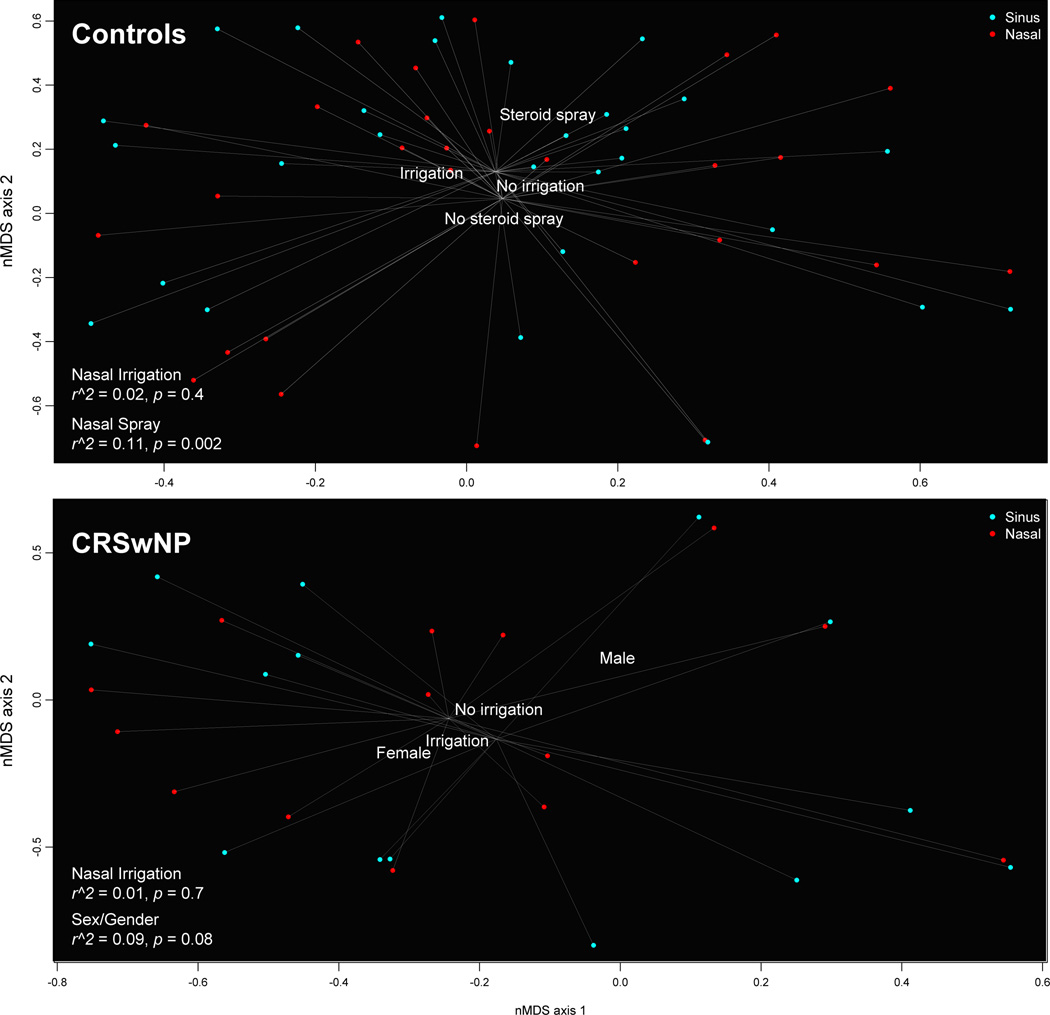Figure 1.
A–B. Visualization of association between nasal saline irrigation and sinonasal microbiota composition by non-metric multidimensional scaling in controls and CRSwNP participants. In these two non-metric multidimensional scaling plots, each data point represents the collective nasal/sinus microbiota in a single specimen from a given individual. Data points that are located more closely together represent more similar microbiota compositions than points that are located farther apart. Each data point is also linked to the group’s nasal (red) and sinus (blue) centroid, respectively. Nasal saline irrigation was not associated with a distinct sinonasal microbiota profile, as shown in the controls (Figure 1A) (p = 0.4) and CRSwNP participants (Figure 1B) (p = 0.7). However, intranasal steroid spray users had distinct microbiota than non-users in the controls (Figure 1A) (p = 0.002) and sex-specific differences were seen in CRSwNP participants (Figure 1B) (p = 0.08)

